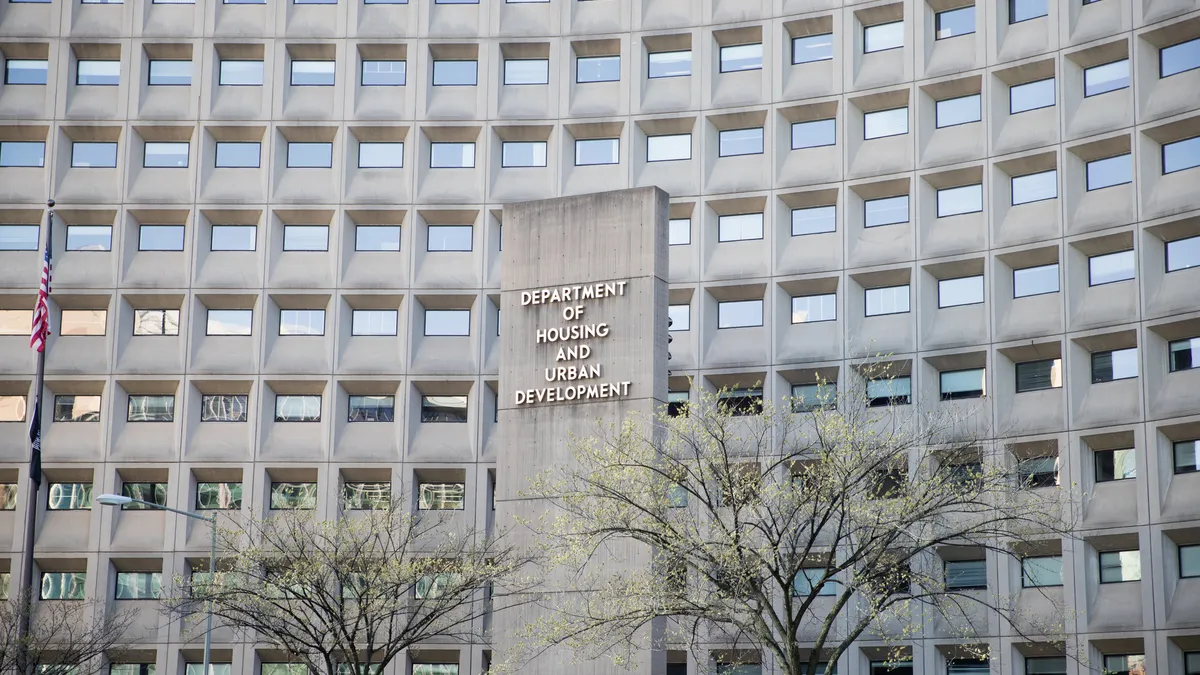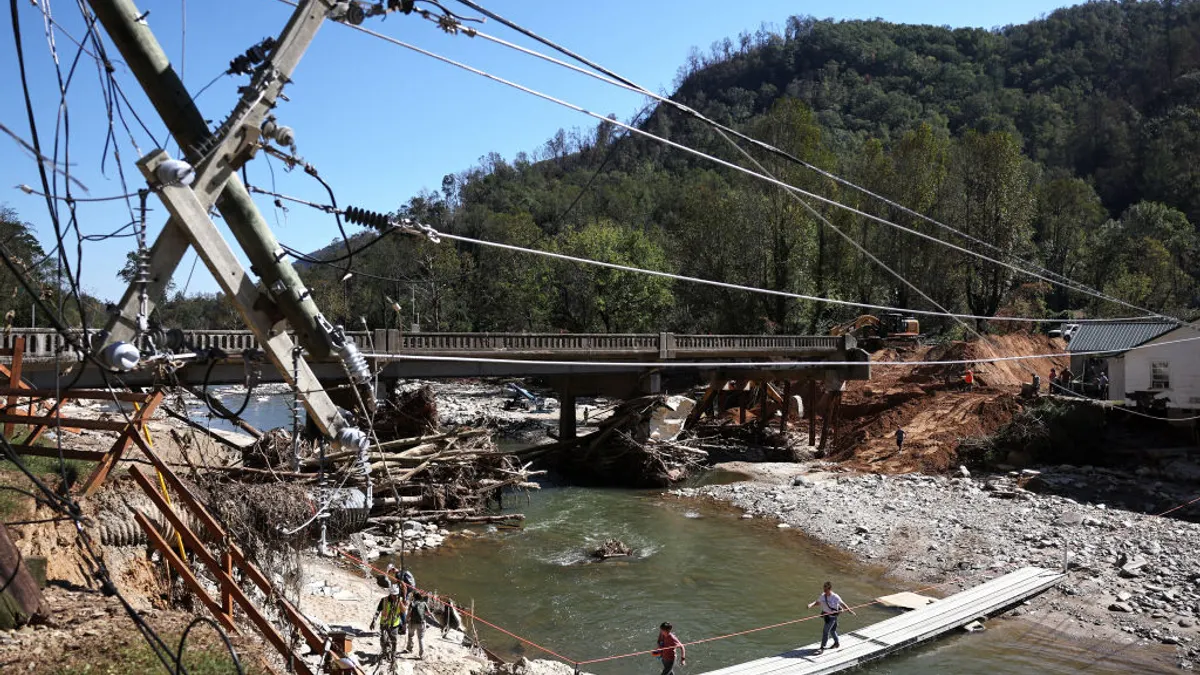Editor's Note: The following is a guest post from Brandy Bones, senior director of disaster recovery and resiliency programs at ICF.
Floods change communities forever. Time and time again, storms have destroyed the homes of populations living in floodways and floodplains. Many people choose to stay and rebuild, only to experience another catastrophic weather event several years later.
Buyouts are a critical component of a holistic approach to smart and resilient community recovery after a disaster. They save lives and save taxpayers money. As disasters increase in frequency and intensity and more funding becomes available following disasters, federal recovery dollars are shifting toward these preventative programs.
Thanks to opportunities provided through the Federal Emergency Management Agency (FEMA) Hazard Mitigation Grant Program (HMGP) and Department of Housing and Urban Development (HUD) Community Development Block Grant Disaster Recovery Program, along with state and local government initiatives, residents in many at-risk regions now have a chance to choose a safer path for their future.
After flooding events in 2011, for example, Pennsylvania was able to leverage FEMA and HUD funding to ultimately purchase almost 700 properties. As a result of this program, in one locality — Plymouth Township — there are almost no homes or businesses in a flood zone. And in one neighborhood, the state worked with HUD to provide assistance for low and moderate income households living in homes that were sinking due to a flooding event and had no other means to move.
Buyouts of flood-prone properties remove people and properties from high-risk areas while providing assistance to purchase a home in a safer area. The purchased properties are converted into open spaces to absorb flood waters in future storms, making the wider community more resilient to weather events and expanding local parklands, wetlands, forests, and wildlife management areas.
Numerous state and local governments are using their recovery funding for buyouts to proactively get ahead of current and future risks rather than mitigating the aftermath. Public and community leaders know that flooding will continue to occur in these areas, so they are making wise investments to protect the well-being of residents in advance.
While there have been laudable efforts which have successfully empowered communities to move out of high-risk areas, buyout programs face some complex and sensitive challenges. Initiatives with good intentions often have unanticipated consequences for the vulnerable populations involved. Local economies can suffer and, at times, funding is not always equally distributed.
So, how can communities relocate people to safer areas without encountering major unforeseen issues? Here are some key considerations for government officials to consider when developing a buyout strategy.
What are the possible economic impacts?
Before any program can proceed, officials must determine who the holding entity will be — in perpetuity. There are carrying costs associated with monitoring and maintaining the acquired land forever. Governments need to plan ahead for these investments, perhaps identifying the government agency or local land trust that will cover the long term expenses.
Another massive concern with buyouts is the loss of the local tax base. It’s in the community’s best interest to move out of harm's way, but keeping public services afloat without any taxpayers in the area is a significant challenge. Governments need an alternative funding strategy to alleviate the financial pains caused by relocating an entire community. These can be handled by holistic recovery planning that considers things like new, resilient housing development in safer areas, transit-oriented development and supportive housing options for an aging population within the buyout area jurisdiction.
And when weighing the economic impacts, governments shouldn’t forget the economic upsides of buyouts to the community and the local government. Purchasing properties in high-risk areas reduces risk to surrounding areas by creating natural barriers and protecting building assets from flood risk. Buyout programs can also decrease flood insurance premium rates for the entire community by improving its overall National Flood Insurance Program's (NFIP) Community Rating System (CRS) score.
Working with communities facing uncertain futures
Typically, buyout funding is not distributed until after a natural disaster hits. However, there is a lot of pre-planning, community involvement and outreach that can take place in advance.
Policymakers should identify buyout areas before disasters occur and start conversations with the residents now so they can play a meaningful role in designing the plan. This dialogue allows homeowners to be a part of the process and direct the plans for their future. If there's a strategy in place well before a disaster happens, homeowners will be ready for action when the next flood strikes and the associated funding becomes available.
However, for all the good that buyout programs can do, they also can break up communities. Giving up your home is difficult. When considering buyouts, people will want an alternative place to relocate where communities can stay together. The closer to home, the better. And, the cost of living needs to be comparable to their current situation.
Lower-income neighborhoods often need buyouts the most. Moving may not seem like a viable option to these communities for a variety of socioeconomic reasons. For example, if relocating to a new area requires them to give up homeownership, residents are less likely to participate.
Governments can consider — and certain federal funding sources allow for — housing incentives, which can help offset the additional costs associated with moving and purchasing a home in a lower-risk area. Alternatively, governments may need to do development or rehabilitation work at the replacement site. This involves significant up-front funding which should be anticipated and set aside when disaster funding becomes available.
What happens if there’s not 100% participation?
After a 1992 storm, an Oakwood Beach neighborhood committee in New York’s Staten Island formed to gather information and figure out what options were available to stop flooding from happening again. Then Hurricane Sandy hit and the community regrouped to pick up where it started, proactively pursuing funding from the state for a buyout program.
After an investment of over $225 million from the state, the program did not achieve 100% participation — 88 homeowners chose to stay behind. The municipality agreed to continue to provide services to the households that stayed behind and the program successfully moved the vast majority of residents out of harm’s way. Most programs do not convince every single resident to relocate. And that’s okay.
However, there is a lot of things governments can do to incentivize participation. Officials should do their best to enable people to remain homeowners somewhere else and to the extent possible, allow the community to stay together in another area. Sufficient financial support — particularly for more vulnerable populations with lower property-valued homes — needs to be provided. Successful buyout programs should not make homeowners renters. Sound programs provide sufficient proceeds from the sale of the home to enable homeowners to purchase housing in safer areas.
Homeowners may also need help with the legal paperwork associated with selling a home. Officials should ensure there are strong case management and legal aid systems in place to help vulnerable families navigate selling their at-risk homes and getting settled into their new homes.
There’s no such thing as a perfect buyout program, however to attain maximum impact, policymakers should stick to a few best practices:
Plan ahead
Advance planning before a disaster is often critical to the success of buyout programs. States and localities know what areas are most vulnerable to natural disasters and where severe repetitive loss and repetitive loss properties are located. They can start identifying potential buyout areas now and then proactively work directly with households and businesses in those areas to identify their interest in a buyout, what supports and incentives they need in order to participate and how the government will (or will not) be involved to relocate households to safer areas. That way when the next disaster hits and FEMA or HUD funding becomes available, the government is able to move quickly to execute that plan with buy-in from the community already in place.
Create transparent processes
Public outreach and engagement are key to ensure that all participants understand what they will be paid for their homes and what additional incentives, if any, are available. Every homeowner needs to understand the eligibility requirements, what they need to do to know who is eligible, when they are eligible and how much they will receive.
Involve the impacted community
Ensure that communities are included throughout the process and they are involved in decisions, as appropriate. Also, if there is a group relocation plan, residents should be included in that conversation early on to obtain buy-in.
Identify a steward for the property
As mentioned, a holding entity is essential. Work with government agencies, land trusts, and other community partners to devise a plan for managing the property long-term and ensuring that entity will have sufficient funding to maintain the property in perpetuity.
No one wants to suffer the consequences of a major storm. People are tired of getting their homes flooded two, three, four or more times. Flood insurance can be cost prohibitive and is likely to be increasingly so as flood maps and the way we measure risk are updated to reflect prospective future risk. Communities that face increasing natural disaster and infrastructure risks need alternative solutions — which buyout programs can provide. Fortunately, legislators and government administrators are pushing to expand these initiatives. Successful buyout programs proactively manage retreat to prevent future catastrophic events take place.

















